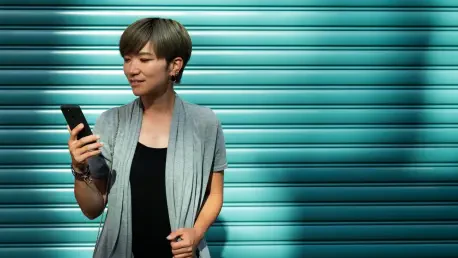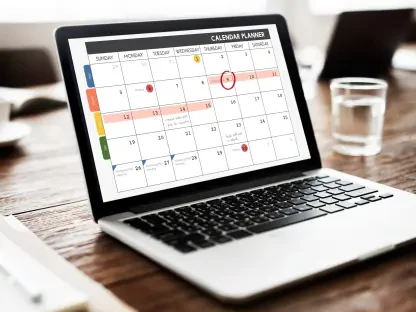In the rapidly evolving world of ad tech, few individuals have managed to shape the landscape as significantly as Carolina Wagner, now VP of Programmatic Strategy & Operations at Automattic. With a career journey that wove through finance and into the heart of Silicon Valley’s tech scene, Wagner’s insights offer a unique window into the complexities and opportunities within the mobile advertising industry. Today, she shares her story and thoughts on the future of ad tech.
Can you describe your career path and how you transitioned from finance to ad tech?
My journey from finance to ad tech was fueled by the dynamic energy of the Bay Area’s tech scene. After four years in finance, I decided to pursue an MBA, which opened doors to a whole new world. During business school, I met a pivotal figure in my career—my future boss, who inspired my transition into the ad tech world with Buysight, a retargeting ad network.
What drew you to the dynamic tech scene in the Bay Area?
The Bay Area’s tech scene was buzzing with innovation and potential, which was incredibly appealing after spending time in finance. The prospect of being part of an industry where new ideas and technological advancements happen rapidly was irresistible. It’s a place where you feel the future is being crafted.
How did meeting your future boss in business school influence your career in ad tech?
Connecting with my future boss during business school was instrumental. It wasn’t just about the opportunity but also about the mentorship and the new perspective on the ad tech industry that they provided. It helped me see the possibilities within ad tech and shaped my approach to the industry significantly.
What foundational skills did you develop during your time at Buysight?
At Buysight, I honed essential ad tech skills such as partner management and gained a deep understanding of the ad tech ecosystem on the buyside. Resourcefulness became vital as I learned to navigate the startup culture, adapting quickly to changes and challenges.
How did AOL’s acquisition of Buysight impact your career trajectory?
AOL’s acquisition of Buysight was a pivotal moment that offered invaluable exposure to exit strategies and the corporate world. The experience fortified my interest in ad tech and spurred a curiosity to delve into the supply side of the business, which set a new direction for my career.
What inspired your desire to understand the supply side of the ad tech business?
Working on the buyside piqued my interest, but I was keen to understand the complete ecosystem. The supply side felt like uncharted territory with its distinct challenges and potential, and I was eager to explore that to expand my industry expertise.
How did the Verizon and Yahoo mergers influence your career at AOL?
The Verizon and Yahoo mergers with AOL were transformative, offering a front-row seat to large-scale corporate integrations. It taught me a lot about strategic realignments and adaptability and underlined the importance of remaining flexible in a constantly changing environment.
How did the layoff in 2018 affect your career decisions moving forward?
The 2018 layoff was a turning point, pushing me to reassess my career direction. It reinforced my passion for the supply side and sparked a growing interest in the mobile space. This led me to seize a new opportunity at Fyber, continuing my journey in mobile ad tech.
What sparked your growing interest in mobile within the ad tech space?
Mobile represented an evolving frontier in ad tech, distinct from traditional desktop monetization. I was intrigued by the unique challenges it posed, particularly balancing revenue with the user experience, which is crucial for user retention and satisfaction.
How did your reconnection at an industry conference lead to a role at PubMatic?
At an industry conference, reconnecting with a former colleague was serendipitous. Their proposal to join PubMatic, a company on an exciting growth trajectory in mobile, was timely. It reflected the importance of maintaining industry relationships and being open to new opportunities.
What were your main responsibilities and achievements during your time at PubMatic?
At PubMatic, I took on a director role, focusing on business development, particularly in the mobile sector. During my tenure, PubMatic’s public offering was a career highlight. It brought a surge of energy and opportunity to innovate and drive significant revenue growth.
What prompted your move from the vendor side to the publisher side in 2021?
My move to the publisher side was driven by a desire to integrate my monetization expertise with a publisher’s perspective. It was about applying insights from my vendor side experience to enhance value on the publisher end at a company like Automattic.
Can you explain Automattic’s mission and how it aligns with your current role?
Automattic’s mission is about democratizing the internet, empowering users worldwide through platforms like WordPress and Tumblr. In my role, I focus on programmatic strategy, ensuring our advertising efforts align with this mission by driving monetization while respecting user autonomy.
What are your main responsibilities as VP of Programmatic Strategy and Operations at Automattic?
I oversee programmatic monetization across Automattic’s platforms, driving revenue growth and strategic initiatives. We’re a lean team, which means juggling diverse roles, from ad operations to strategic planning, and ensuring our strategies meet evolving market demands.
How has Automattic’s advertising strategy evolved over the years?
Automattic’s advertising strategy has matured, focusing on balancing revenue generation with user experience. As user dynamics and technologies evolve, so do our strategies, which now include more innovative and user-aligned revenue streams while maintaining strategic partnerships.
What makes balancing revenue generation with user loyalty rewarding and challenging for you?
Balancing revenue and user loyalty is rewarding because it necessitates innovation and a user-first approach. The challenge lies in ensuring monetization efforts don’t disrupt user experience, requiring constant vigilance and adaptation to changing user expectations and industry trends.
What are some of your biggest accomplishments at Automattic?
Driving a 55% increase in programmatic revenue and spearheading successful multi-integration projects reflect my accomplishments at Automattic. These achievements underscore the effectiveness of strategic adaptability and innovation in a rapidly shifting digital landscape.
What lessons have you learned about adaptability through various acquisitions and mergers?
Adaptability taught me to navigate change effectively and manage diverse teams under different leadership styles. Successful adaptation ensures resilience, equipping teams to handle evolving goals and the uncertainties brought by mergers and acquisitions.
How do you proactively build and maintain successful partnerships in mobile advertising?
Building partnerships requires proactive engagement, maintaining open communication, and understanding both qualitative and quantitative metrics. Regular check-ins and adapting to industry shifts are pivotal to sustaining valuable relationships and ensuring mutual growth.
Which quantitative and qualitative metrics do you consider when assessing partnerships?
Quantitative metrics like revenue, eCPMs, and fill rates guide partnership assessments, while qualitative measures include alignment with partners, communication effectiveness, and support quality. These together provide a holistic view of partnership success.
What key trends do you see impacting mobile advertising partnerships today?
The rise of AI and new ad formats are reshaping mobile advertising, demanding creativity in maintaining user engagement. Staying agile and receptive to these trends is crucial for adapting strategies that balance innovative advertising with user-centric design.
How are you adapting to the rise of AI and new ad formats in the industry?
Adapting to AI’s rise involves leveraging its capabilities for creative optimization and strategic decision-making. New ad formats also require adaptability to ensure user-friendly experiences while integrating innovative approaches that maximize engagement and revenue.
What challenges do women still face in the male-dominated ad tech field?
Women in ad tech face biases and stereotypes regarding their professional competencies. Overcoming these challenges requires workplaces to value diversity genuinely and cultivate environments where women’s unique perspectives are acknowledged and fostered.
How can workplaces support diversity and inclusion more effectively?
Workplaces can foster diversity by recognizing the value of varied perspectives and implementing policies that encourage inclusivity. Creating supportive networks and providing equal opportunities help build environments where diversity thrives and every voice is heard.
What is your take on the competition among women based on outdated notions of limited opportunities?
Competition based on limited opportunity perceptions is counterproductive. Supporting one another is vital, as shared success enriches the industry. Encouraging collaboration redefines the landscape, asserting that opportunities exist for all capable individuals.
What advice would you give women aspiring to build successful careers in mobile advertising?
Focus on delivering tangible results. Despite biases, consistently strong performance speaks for itself. Women should remain driven, and their achievements will naturally counteract industry stereotypes, paving the way for a successful career.









